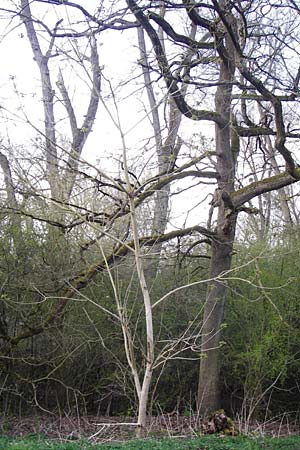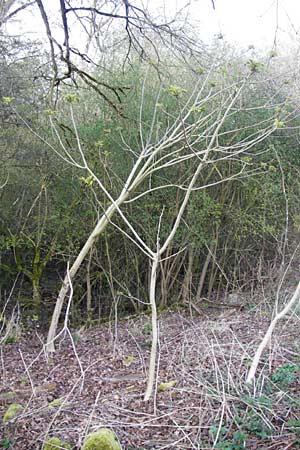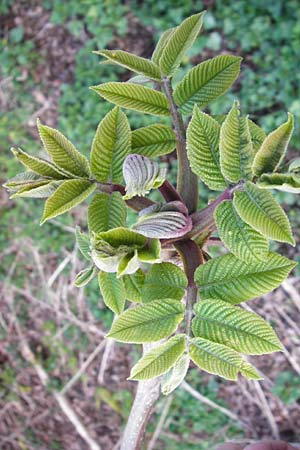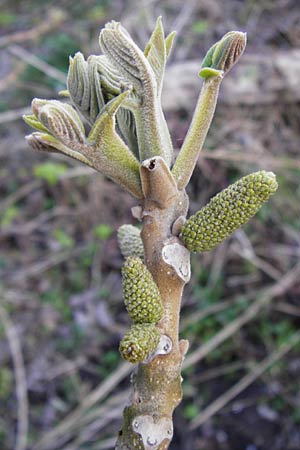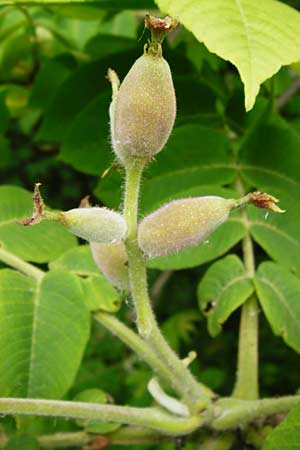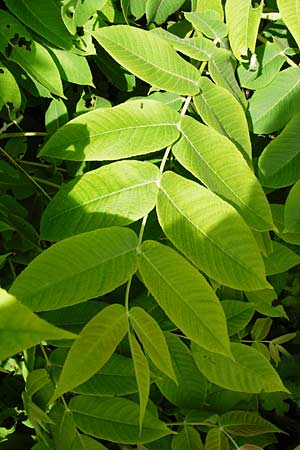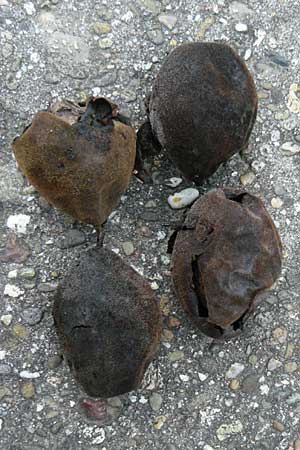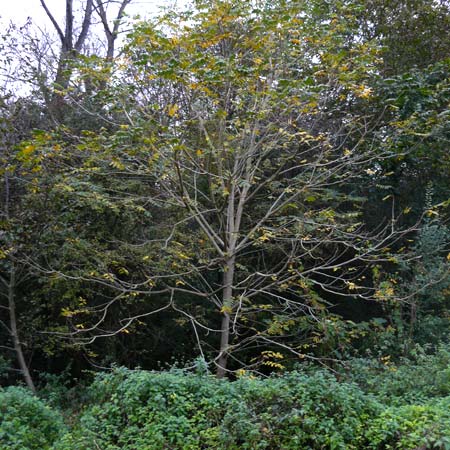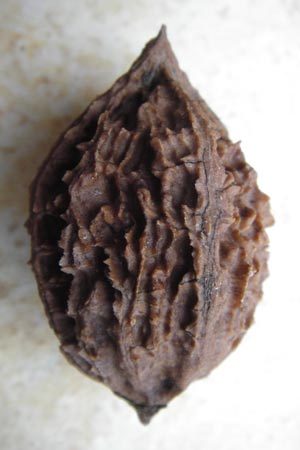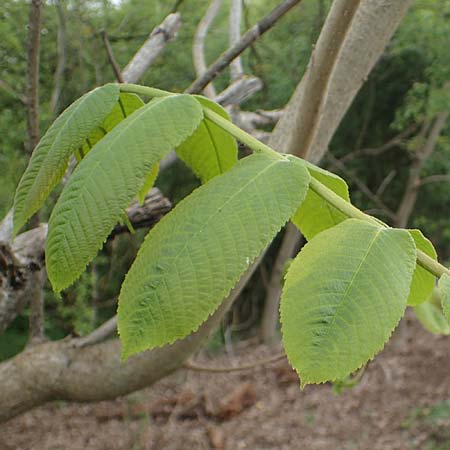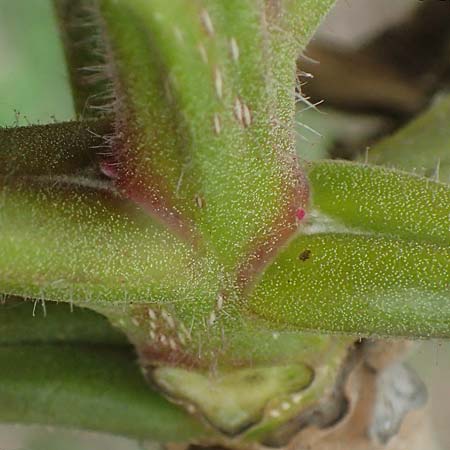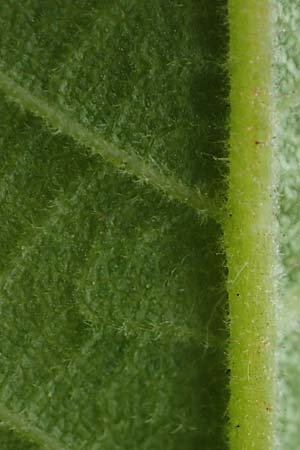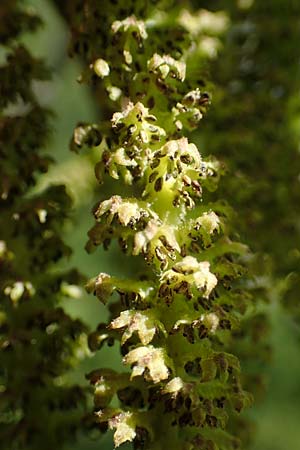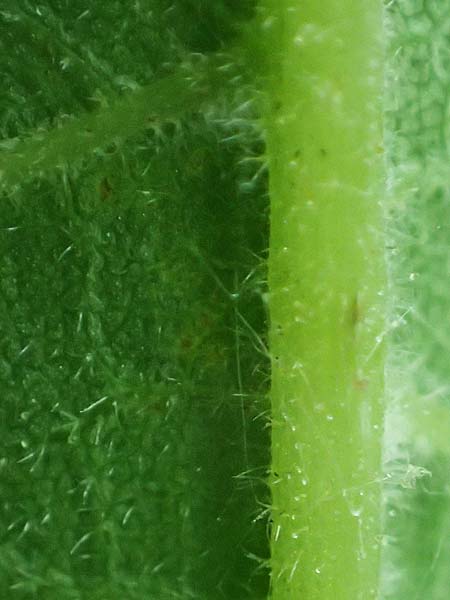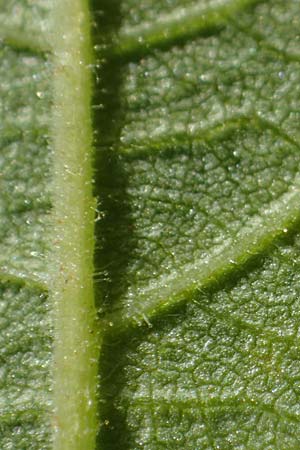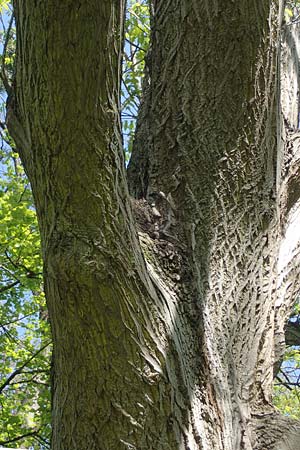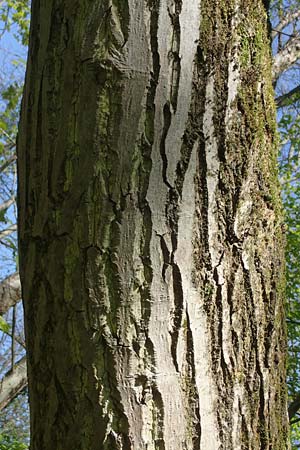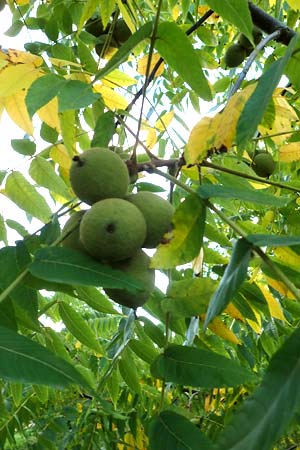The nut from which this population of foreign walnut trees in an alluvial forest southwest of Gernsheim (Hesse) arose,
may have been washed ashore by a flood of the Rhine. For example, there is a large tree of this kind in the Waldpark near Mannheim which is inundated by the Rhine during floods.
In 2011 the Gernsheim population was found by Thomas Gregor, Andreas König and Egbert Korte, and determined as Japanese Walnut Juglans ailanthifolia CARR.
The finding was published in the website of the Botanischen Vereinigung für Naturschutz in Hessen (BVNH) (Botanical Association for Nature Conservation in Hesse).
I collected the nuts with the very jagged shell shown in Fig. 22 to 25 under the Gernsheim trees.
According to various Internet sources Juglans ailanthifolia s.str., which comes from Japan and Sakhalin,
has however nuts with a smoother shell similar to those of our Walnut Juglans regia, they are only smaller than those of the Walnut.
By former authors the Manchurian Walnut Juglans mandshurica MAXIM., which grows in other parts of East Asia, especially in China,
has also been included within Juglans ailanthifolia, this species has nuts with jagged surface as those collected at Gernsheim.
Very similar nuts with a very jagged shell as Juglans mandshurica has the Butternut Juglans cinerea, too, which comes from North America.
Both are planted as park trees in Europe. The attributes of the leaves that are mentioned in the
Juglans keys from Thomas Meyer are speaking more for the Butternut:
The leaflets of the leaves, which are of various size and with long distented tip, have star hairs on the underside. The hairs of the leaves and young branches are sticky in spring.
|
